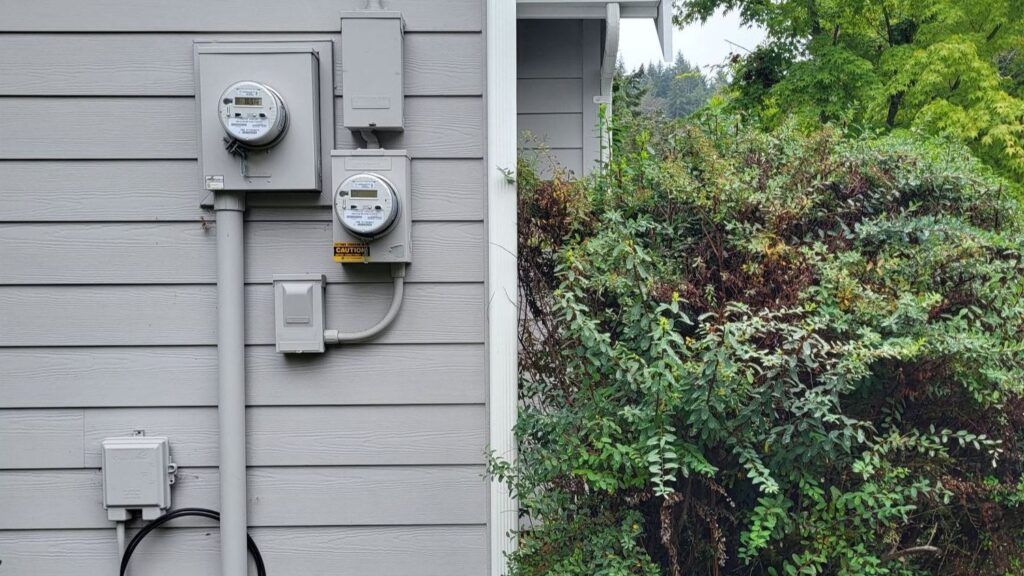
TLDR: Puget Sound Energy’s net metering program will likely change next year, so going solar in 2025 secures current benefits before future changes. Demand for solar and batteries is expected to rise in the coming year, and switching to solar now ensures maximum savings.
If you’ve been thinking about going solar or expanding your current system, the clock is ticking. Washington’s net metering program—a key driver of solar affordability—is nearing its limits for Puget Sound Energy (PSE). When Ecotech Solar started in 2004, PSE’s net metering program was in its infancy. It has persisted for the last 26 years, and we have been able to help 1800 of your friends and neighbors reap those rewards by switching to solar.
Going solar or adding panels to your system in 2025 ensures you’re grandfathered into the current net metering program, preserving the full financial benefits for years to come.
Here’s what you need to know:
What Is Net Metering, and Why Does It Matter?
Net metering allows solar owners to send excess electricity generated by their systems back to the grid, earning credits that offset future energy bills. Currently, this 1:1 credit system means that every kilowatt-hour (kWh) you export can reduce your electricity costs at retail value later, making solar power an even smarter financial choice.
However, net metering isn’t infinite. Washington’s net metering law (RCW 80.60) requires utilities to offer these credits only up to a certain obligation: 4% of their 1996 peak demand. Once a utility reaches that obligation, it can change its rate structure for new solar customers—and those changes likely won’t be as favorable.
PSE’s Net Metering Obligation: Nearing the End
Puget Sound Energy, the largest utility in Washington, has been rapidly approaching its net metering obligation. As of June 2024, PSE had already exceeded 100% of its required obligation. While the utility is allowing new solar installations to join the current net metering program until December 31, 2025 (or until a new rate structure is implemented), time is running out for those who want to lock in these benefits.
Installing solar or expanding your system after 2025 could mean missing the opportunity to secure today’s 1:1 net metering rate. Future changes to the program will likely have lower rates for excess energy sent back to the grid, reducing the financial return on your solar investment.
What’s Next for Solar Customers?
While utilities like PSE are required to seek approval for any proposed changes to net metering through the Utilities and Transportation Commission, the details of future rate structures remain uncertain. Some utilities that have already hit their obligations, such as Orcas Island Power & Light (OPALCO), have adopted new rate systems that compensate solar customers at lower rates for excess energy while adding grid usage fees. Current rates for OPALCO customers translate to about 64% of the full retail value. We won’t know what PSE’s replacement program will look like, but OPALCO is a good example of one local utility’s rates.
Why Act Now?
- Lock in current benefits: By installing or expanding your system before new rules take effect, you can ensure you’re covered under the existing 1:1 net metering program.
- Avoid uncertainty: Future rate structures could reduce the value of your solar investment.
- Take advantage of incentives: In addition to net metering, other federal and state incentives are still available, making this a cost-effective time to go solar.
- Protect yourself from rising rates: With utility rates on the rise, solar power lets you take control of your energy costs and generate your own electricity.
Don’t Miss This Window of Opportunity
We anticipate high demand for new solar installations and system expansions in 2025. With rebates, incentives, and exclusive financing opportunities available now, many homeowners are recognizing the value of solar this year.
Investigating your options now is the best way to ensure you can go solar before any incentives change. We are happy to help you look into options now so there aren’t any surprises or missed opportunities in the future. After more than 20 years of navigating changes in the solar industry, we’re committed to finding solutions that work for our community.